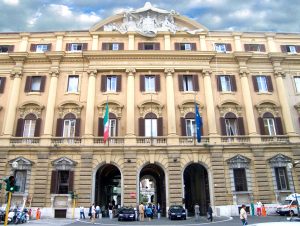After an intensive 36-month research and experimentation, Interlink proudly announces the successful culmination of its innovative approach to co-producing new and innovative public services. Engaging over 20 Public Administrations and 420 users, the Interlink Collaborative Environment, supported by 77 Interlinkders and 6 comprehensive co-production schemas, emerges as a transformative one-stop shop for PAs seeking to democratize new services directly with end-users.
“The INTERLINK project has been a testament to the power of collaborative innovation.” – says Matteo Gerosa, the Project Coordinator – “Our journey has yielded transformative results, including an innovative governance model born from interdisciplinary collaboration, a flexible ICT-based co-production guide, and a set of co-production enablers (Interlinkers). The foundation of our positive impact lies in a robust community-building process that democratizes the creation of public services, fostering shared understanding and a profound sense of responsibility. As we conclude this remarkable journey, the INTERLINK project stands as a landmark of innovation, inspiring the future of collaborative endeavours for the betterment of society.”
Watch the Final video on YouTube
Focus 1 – The Collaborative Environment
It took 190 internal meetings for partners to design a platform suitable for different stakeholder networks to facilitate the co-production of public services. Designing such a platform was a highly intricate task, requiring digital tools that support various collaboration aspects, such as fostering interaction, motivating participants, mobilizing resources, and facilitating shared decision-making. Moreover, the platform should accommodate the specificities of potentially diverse governance models and adhere to requirements ensuring the quality and trustworthiness of the produced services. Additionally, compliance with EU regulations was essential, as they imposed specific restrictions and recommendations on the digital services adopted by public administrations.
The platform has been tested in three distinct use cases, which include 80 work sessions in pilot initiatives, providing a robust and user-friendly Collaborative Environment as a community web portal. Key features include:
- Co-producer organization, team, and process management
- A comprehensive guide for co-production processes, providing a step-by-step “how to” guide based on a given co-production process schema
- Recommendation of Interlinkers most suitable for chosen co-production tasks
- Selection, instantiation, and registry of usage of a given Interlinker, contributing to the completion of co-production process tasks
- Interlinker catalog showcasing imported and co-produced Interlinkers
- Cloning of processes for internal replication and reuse of previously created co-production processes.
- Publication of success stories from cloned and pruned co-production trees, encouraging third-party replication, and providing a valuable resource for those setting up their collaborative processes.
The Collaborative Environment offers a multitude of capabilities, including:
- Defining Co-Production Approach: tailoring co-production strategies based on service type, delivery stage, and regulatory frameworks.
- Building Public-Civic Communities: facilitating the creation of interest communities around specific public service provisions through brokerage and networking tools, leveraging mobile communication capabilities and apps.
- Provisioning Tools: enabling the seamless deployment, activation, and execution of services, utilizing the required enablers and the Interlink platform.
- Running and Monitoring Adoption: collaboratively overseeing the adoption process with citizens, private bodies, and civil society.
At the heart of the INTERLINK approach is the aim to create or customize services within specific contexts, whether it be a city, a private organization, or a community of citizens. This approach allows for the creation of new services by PAs or private entities, defining a series of activities crucial for the co-production process:
- Engagement Enablers: utilizing technological, non-technological, and partnership enablers essential for the service.
- Service Customization: options for integrating with other tools, setting up notifications, or other specialized actions that provide users with a more tailored experience, and adaptation to local regulations.
- Team Formation: allowing citizens, private entities, and PA officials to apply for defined roles in a controlled and transparent manner.
- Dissemination Activities: conduct activities necessary for promoting the service within the community, such as instantiating templates for promotional materials and creating communication and feedback channels for end-users.
Focus 2 – Interlinkers
Interlinkers are common building blocks, provided as software tools or in the form of knowledge offered digitally, that offer interoperable, re-usable, EU-compliant, standardised functionality for public service co-production management. These enablers are designed to support the co-production of effective, participatory, and sustainable public services. They can be applied:
- To guide co-production: Co-production enablers that guide and support teams in the collaborative execution of the co-production initiatives.
- To build capacity: Partnership tools and knowledge resources, which tackle the legal, social, and business aspects to make co-delivered public services viable and feasible in time.
- To aid service development: Technical enablers for co-delivered services, aligned with other existing EU-wide initiatives to foster interoperable and sustainable public services.
On the platform is available the Interlinker catalog which is flexible, allowing for the addition of new resources to meet specific co-production needs. Grouped into thematic clusters, 77 Interlinkers address various co-production challenges such as stakeholder engagement, service design, development, sustainability, and evaluation.
Interlinkers offer diverse forms of reusability, allowing knowledge to be downloaded for offline use or edited collaboratively within the Collaborative Environment. Sharing resources internally or externally is facilitated, ensuring accountability by tracking usage to inform contributions and resource effectiveness. The formal model for representing Interlinkers aligns with European standards for reusable software components for PAs, ensuring a robust and standardized approach.
Focus 3 – Pilots
The project involved 10 partners from Research and Academia, Business, and Public Bodies, developing three pilots to test the Collaborative Environment in Italy, Latvia, and Spain.
Italy – The Ministry of Economy and Finance (MEF) has vast experience in bottom-up collaborative approaches, always looking for opportunities to further develop its expertise and remain at the forefront of innovation. To this end, MEF tested the Collaborative Environment by developing a mock-up of a Participatory Strategic Planning Module which allows Public Bodies and their staff to actively participate in the definition of the MEF’s Strategic Plan.
Latvia – The Ministry of Environmental Protection and Regional Development of the Republic of Latvia aims to improve the provision of unified municipal services through the improvement of service descriptions available on the Latvian State Portal (https://latvija.lv/EN). Through the involvement of various stakeholders in the co-production process, the Ministry of Environmental Protection and Regional Development of the Republic of Latvia tried to make them more useful and accessible. The need arose from the conclusions driven by Unified State and Municipal Client Service Centres (CSC) which encounter clients who have all means of digital access capabilities to public services, but they choose to use services in person or with the assistance of CSC due to the complicated service descriptions and confusing instructions: e-service descriptions were improved using CE, where various players were involved, like digital agents, social workers, and representatives of the municipalities.
Spain – The Municipality of Zaragoza aims to: complement and boost, through a digital layer, physical co-creation and co-delivery activities; expand the community built around its flagship urban innovation hub Etopia Center for Arts & Technology By gathering high-quality feedback (reporting and tracking), by simplifying how stakeholders’ access to the center of material and immaterial resources (through transparent booking and resource management); improve a more accessible and open catalog of services; promote the transition from users to co-producers and co-deliverers, which is consistent with an agile and “open source” approach in how innovation communities’ work; test innovative methods to enhance the engagement and participation level of the communities around Etopia through tokenization and gamification. Specifically, three important pieces of participatory technology such as the Collaborative Environment, the Booking Activity Module, and the Loyalty Module were tested in real conditions to the extent of their applicability for community building purposes, and subsequently develop a broad range of co-creation, co-design, co-production, and co-delivery activities to put the technology in motion and gather the appropriate feedback.
Focus 4 – Community Building and Rewarding system towards a co-business model
Co-production, facilitated by Interlinkers, aims to democratize the creation of public services by fostering inclusiveness, sustainability, involvement, responsibility, and improved relationships. ICTs support a shared understanding of the complexities of public administration, building trust through open involvement in processes. Maintaining a core group of stakeholders throughout design, development, and delivery stages is crucial: Interlink aids in reducing fragmentation and facilitating handovers between stakeholders, ensuring continuity in long-term processes,
relying on constant communication and involvement in key decision-making processes, strengthening the community, and fostering trust in the public administration.
INTERLINK has developed a sophisticated co-business model to engage and reward people who co-produce. Co-business enables support from the co-production ecosystem, provides means to reward active co-producers, and helps in ensuring the long-term sustainability of co-production outcomes. In addition, co-business supports the objectives of co-exploitation, defined as “the exchange of benefits to maximize the gains from co-production”, by bringing additional benefits to the original authors when their work is used by others.
Take away
INTERLINK emerges as a transformative force, not only in co-production strategies but also in building vibrant and engaged communities committed to shaping the future of public services. Interlink’s achievement represents a paradigm shift in public service co-production, fostering a collaborative, inclusive, and user-centered approach strengthens both local and online communities.





